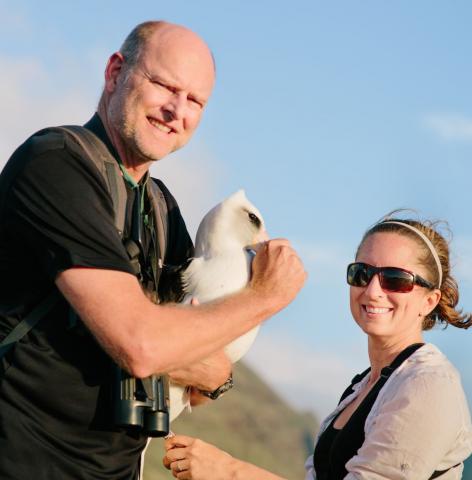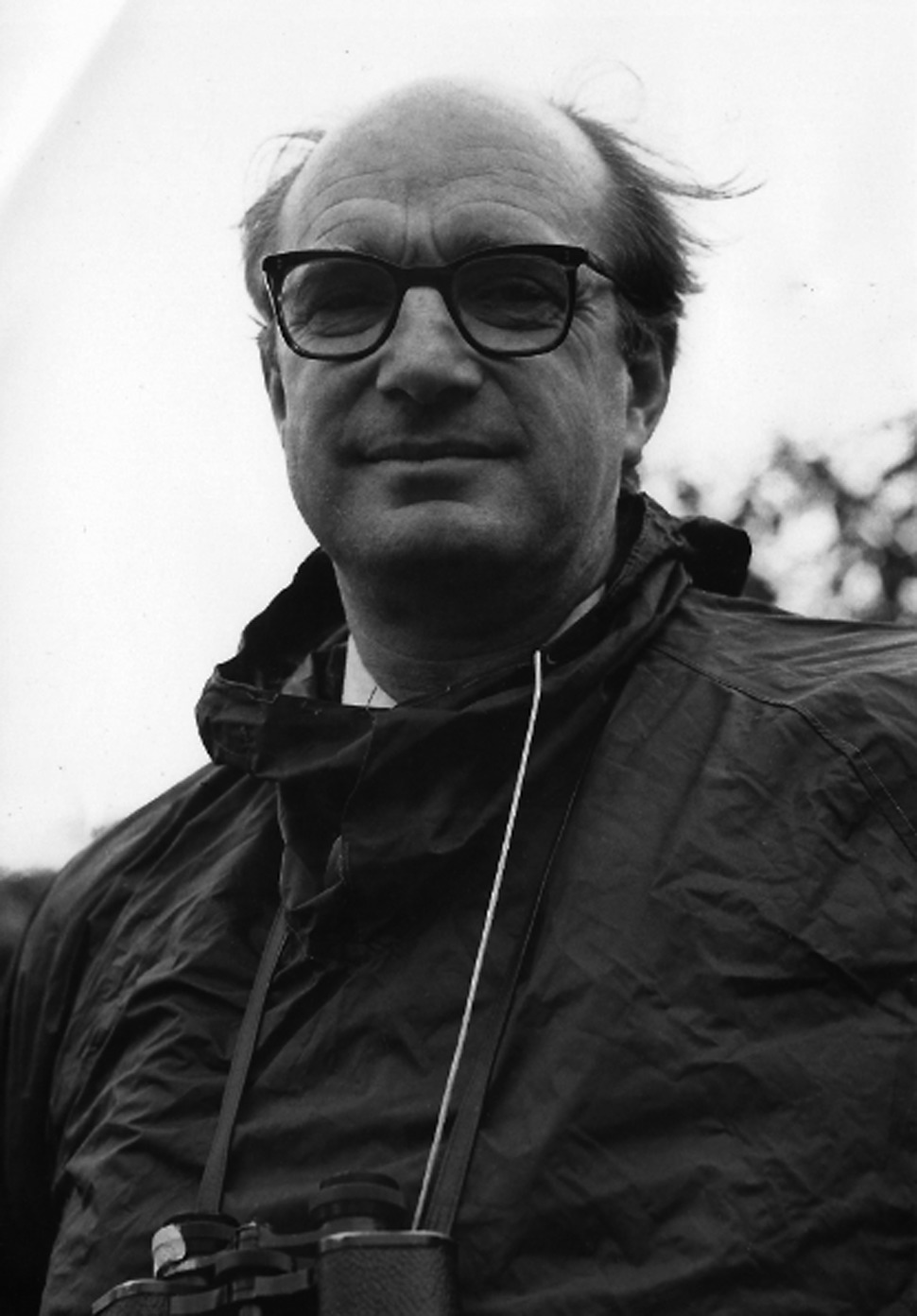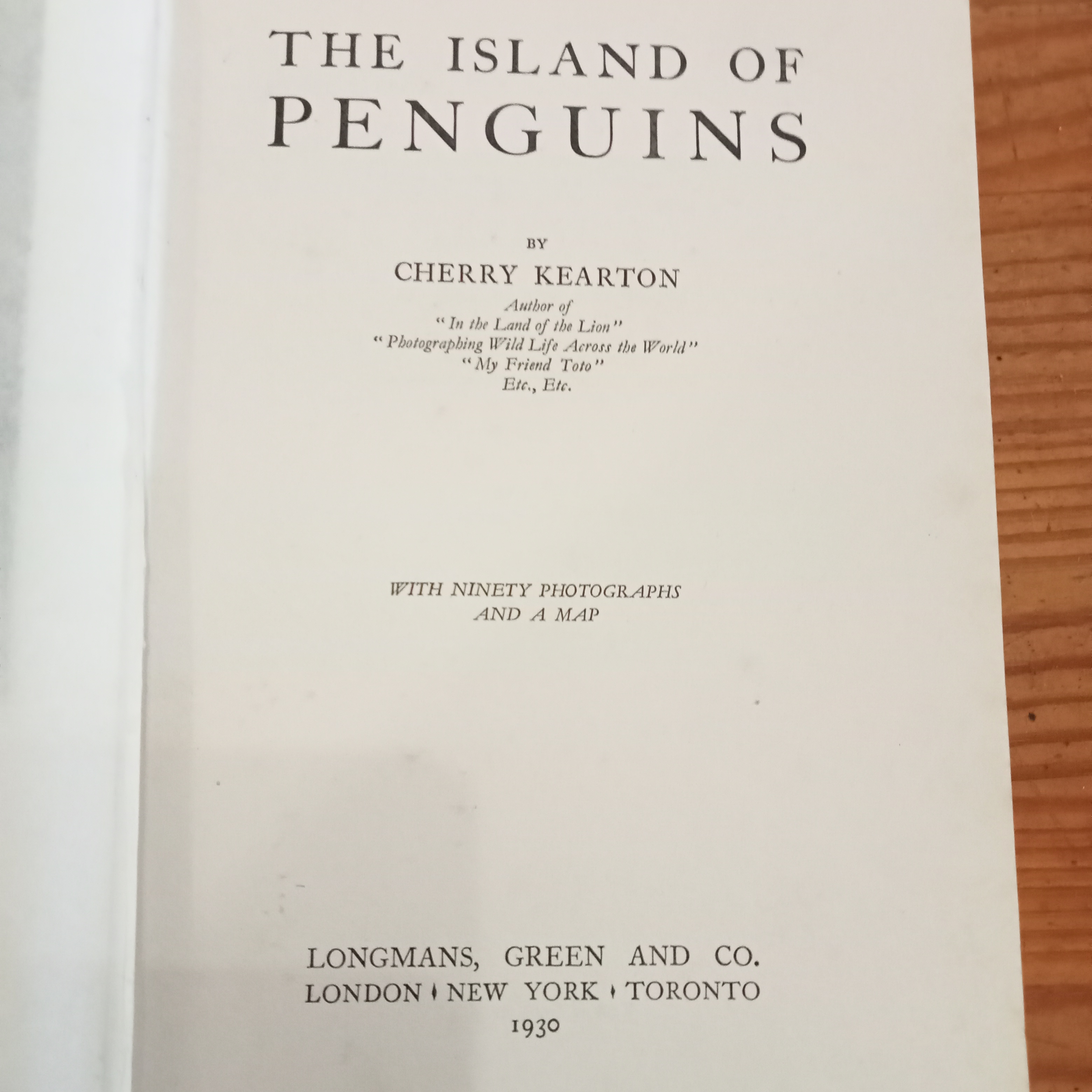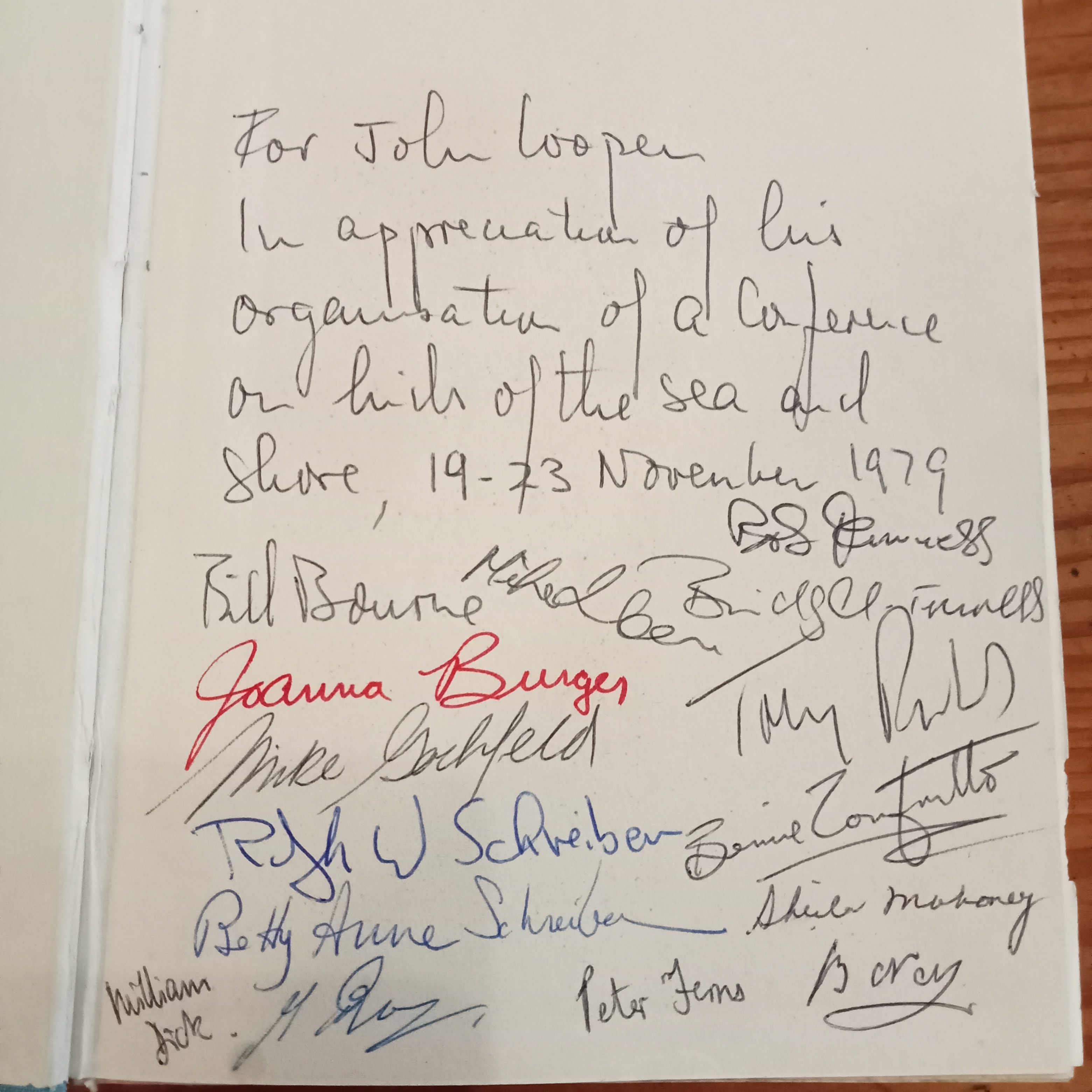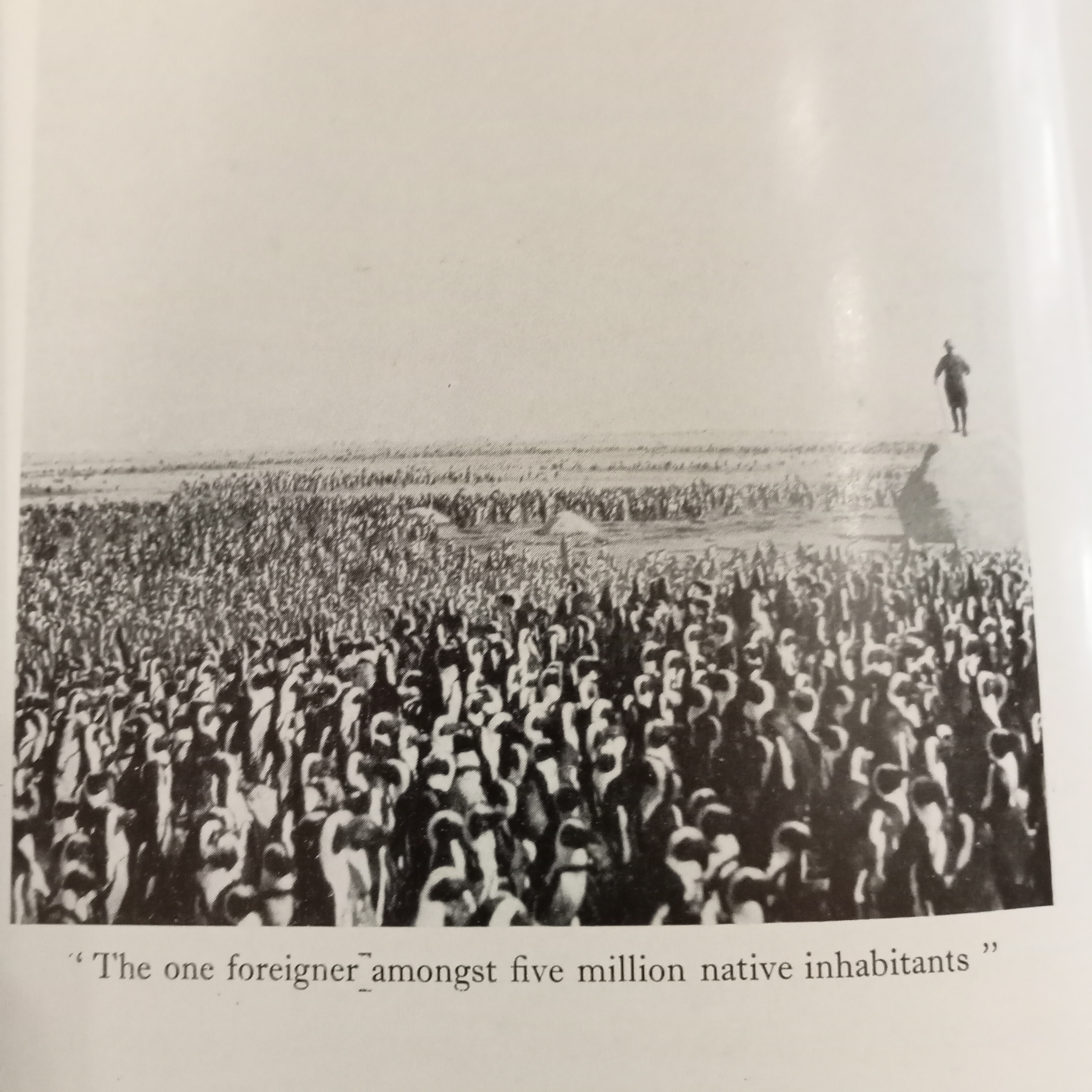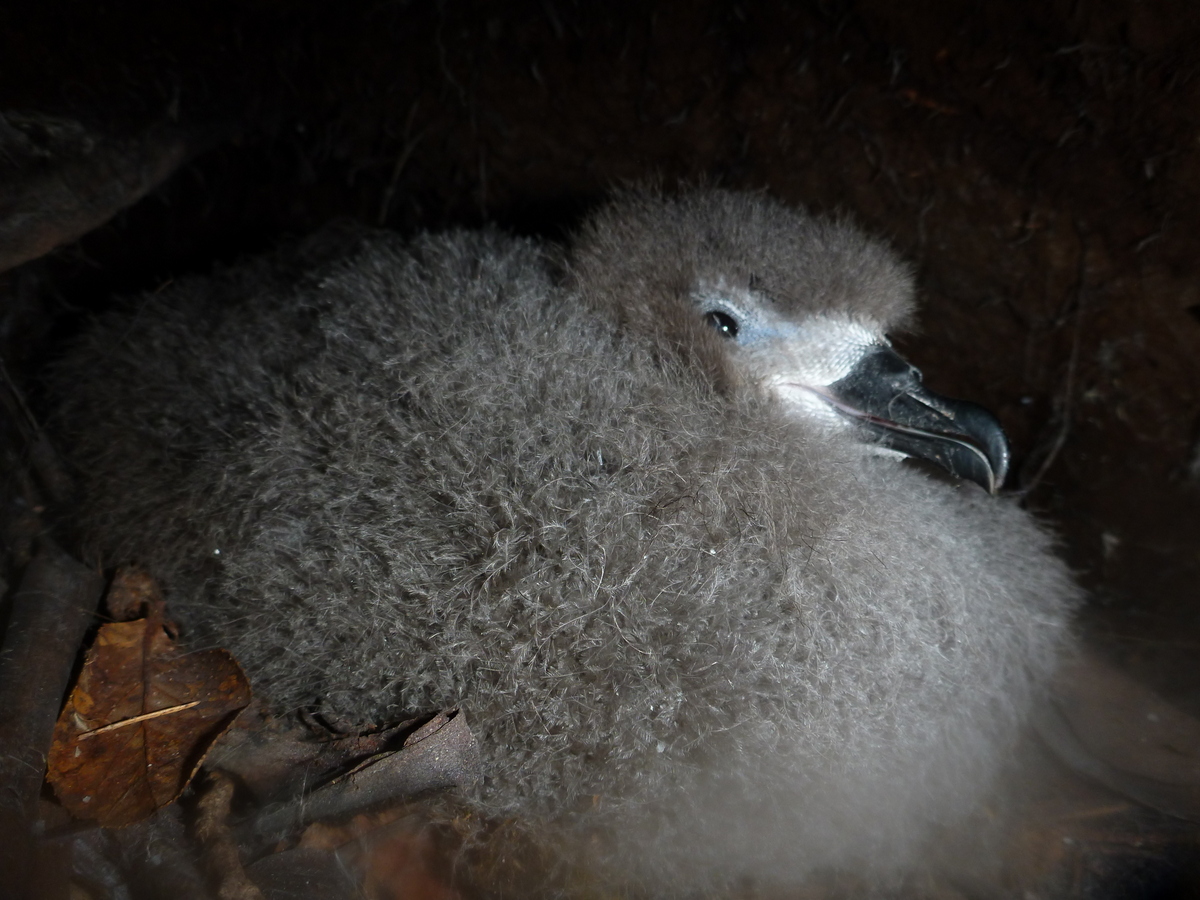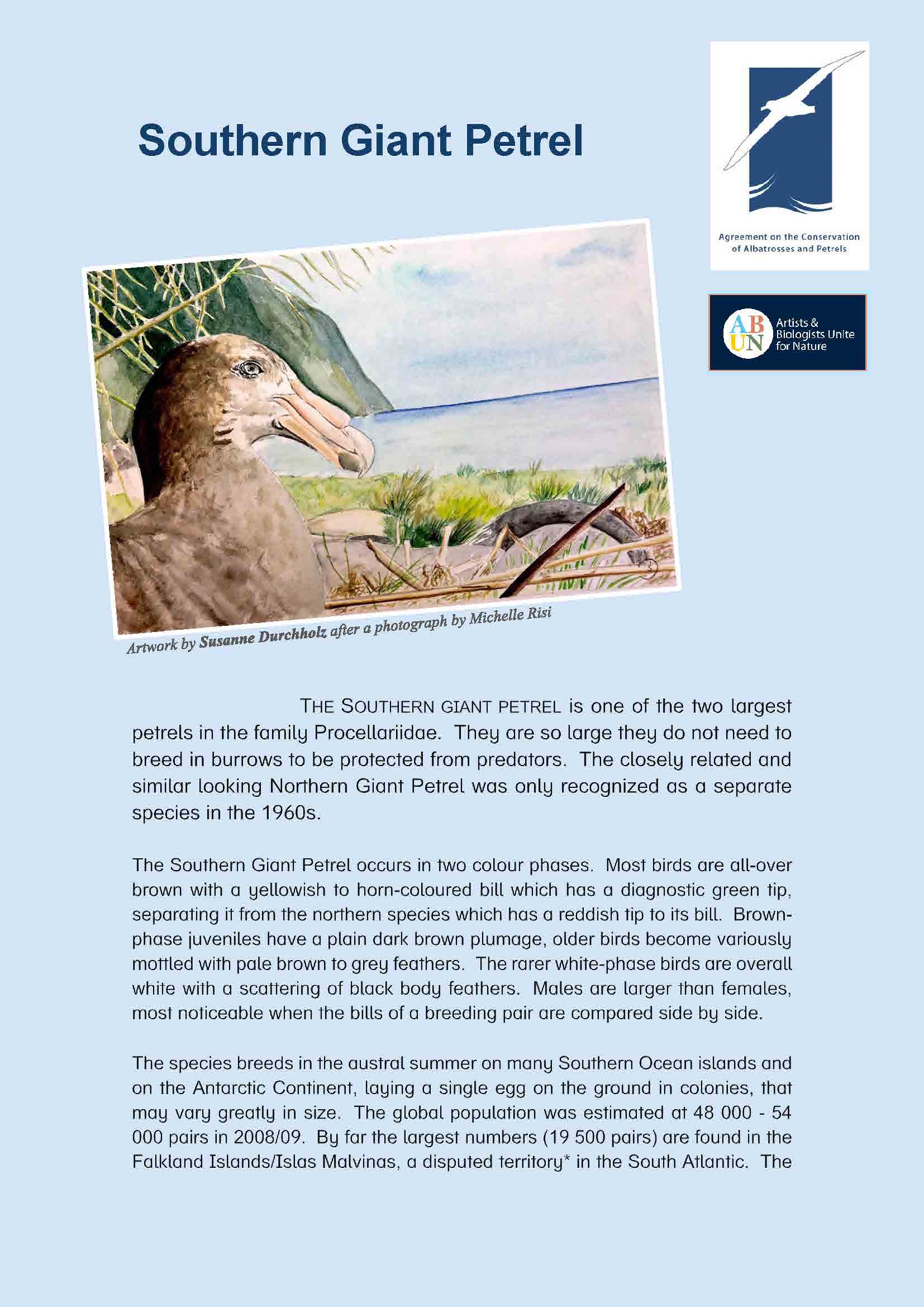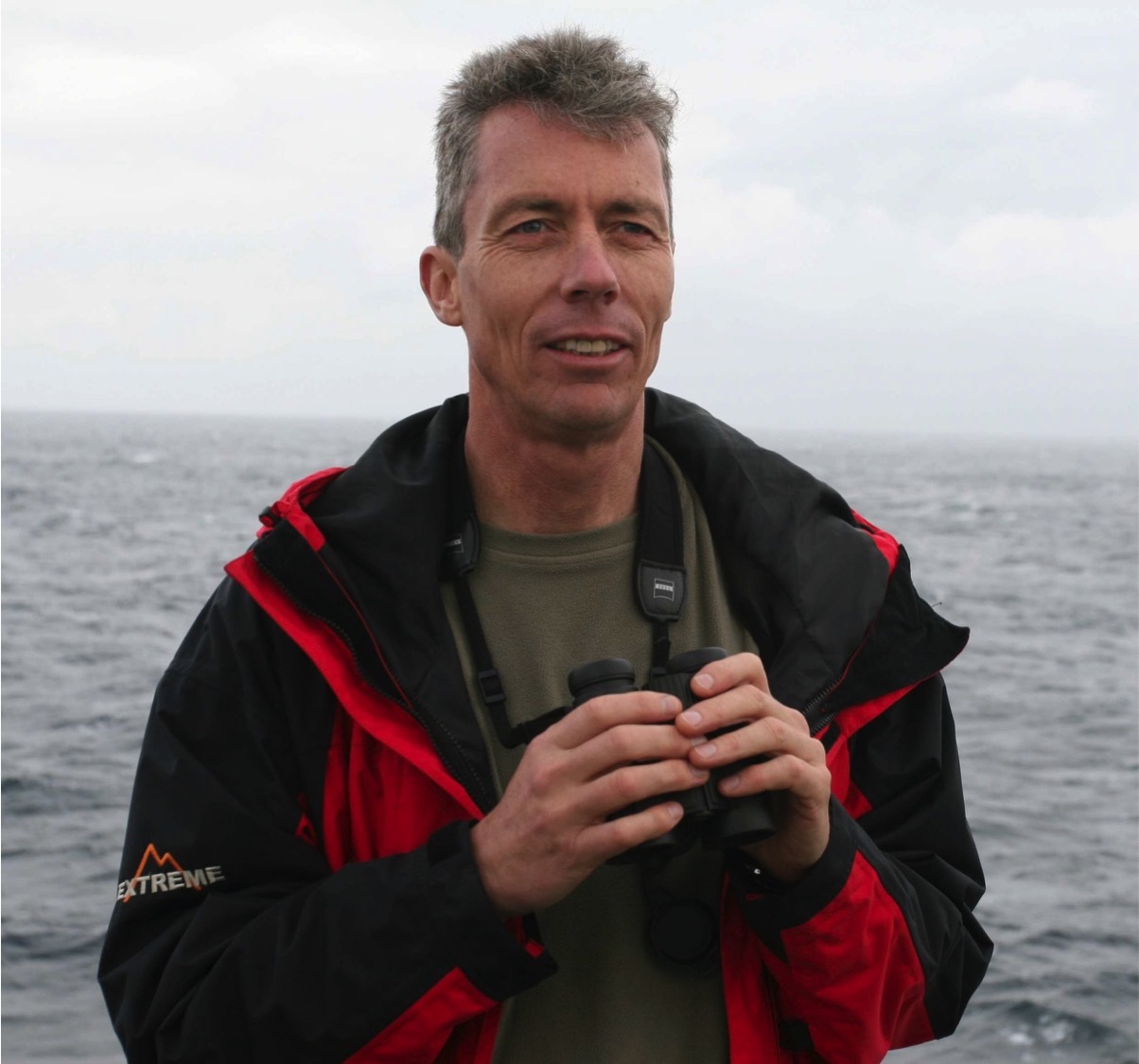
Peter Ryan, at sea in his natural habitat
Professor Peter Geoffrey Ryan, Director of the FitzPatrick Institute of African Ornithology since 2014 at the University of Cape Town, was awarded BirdLife South Africa’s Gill Memorial Medal at the organisation’s AGM, held virtually on 28 May. Peter is the only South African A-rated ornithologist, an author and co-author of many bird books, including on seabirds (see below), and an accomplished bird photographer.
The Gill Memorial Medal is awarded for outstanding lifetime contributions to ornithology in southern Africa. The inaugural award was presented 1960 and to date has been awarded 26 times; only four recipients can be said to have concentrated their studies on seabirds.
The citation for Peter’s award says in part “He has made particularly important contributions to the fields of seabird ecology, marine plastic pollution and its impacts on seabirds, mitigation of seabird bycatch by fisheries, and evolution in oceanic island birds. Peter has also led important work on the systematics and phylogeography of continental African birds, and on the effects of energy infrastructure (such as wind turbines and power lines) on land birds.”
Peter Ryan has also received the Gilchrist Memorial Medal of the South African Network for Coastal and Oceanic Research (SANCOR) in 2017 for his contributions to marine science and has been elected a Fellow of the Royal Society of South Africa. He is set to retire from the ‘Fitztitute’ at the end of the year. His citation, written by colleague Claire Spottiswoode (herself a recipient of the Gill Memorial Medal) ends with stating Peter “plans to remain active in research and, knowing him, we can be reassured that he will be more active than ever. As a community we will no doubt continue for decades to come to be inspired (and more than a little awed) by his knowledge, productivity, and insight.”
Reflecting my advanced years, I am pleased to say I have known (or at least met) all 26 Gill Memorial Medal recipients, co-authoring scientific publications with a number of them over five decades. Surely most have been co-authored with Peter, who I have much valued as a colleague on many island field trips and as a caring friend since his schoolboy days (when presciently I told him on a seabird island that one day he would become Director of the FitzPatrick Institute).
Selected Publications:
Ryan, P.G. (Ed.) 2007. A Field Guide to the Animals and Plants of Tristan da Cunha and Gough Island. Newbury: Pisces Publications. 162 pp. [ACAP review].
Ryan, P.[G.] 2017. Guide to Seabirds of Southern Africa. Cape Town: Struik Nature. 160 pp. [ACAP review].
John Cooper, ACAP Information Officer, 31 May 2022

 English
English  Français
Français  Español
Español 